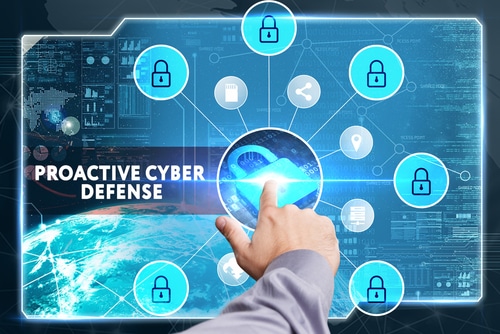
Heightened Ransomware Activity on a Global Scale
In a digital age where the boundaries between the physical and virtual worlds blur, security of our data, protection of our brands, and a clear understanding of our risk postures has never been more critical. The recent ransomware attacks, resulting in paralyzed operations and millions of dollars paid underscores a glaring vulnerability in our cyber defenses. These are just a few incidents recorded in the past two weeks:
- OneBlood, a large not-for-profit blood center that serves hospitals and patients in the United States, reported an IT systems outage caused by a ransomware attack.
- Reuters reported that a ransomware attack on a technology service provider has forced payment systems across nearly 300 small Indian local banks to shut down temporarily.
- The Cybersecurity and Infrastructure Security Agency (CISA) has ordered U.S. Federal Civilian Executive Branch (FCEB) agencies to secure their servers against a VMware ESXi authentication bypass vulnerability exploited in ransomware attacks by August 20.
- The Zscaler ThreatLabz researchers brought to light a record-breaking $75 Million ransom paid to Dark Angels Gang.
All these occurrences underscore the urgent necessity for organizations of all shapes and sizes to develop and implement robust cybersecurity strategies.
Understanding the Ransomware Threat

Ransomware, a type of malicious software designed to block access to a computer system or data until a ransom is paid, has become a preferred weapon for cybercriminals. These attacks can cripple businesses, halt operations, and cause significant financial and reputational damage.
The increasingly sophisticated tactics employed by ransomware actors once again reveal how lucrative and devastating these attacks can be. Ransomware variants have evolved to include advanced encryption algorithms that make it nearly impossible to retrieve the locked data without paying the ransom. Additionally, the rise of ransomware-as-a-service (RaaS) platforms has lowered the entry barrier for aspiring cybercriminals, enabling even those with limited technical skills to launch effective attacks.
Why an Organizational Wide Cybersecurity Strategy is Essential
As ransomware threats continue to evolve, staying informed about the latest trends and defense mechanisms is crucial for all stakeholders. The fight against ransomware is ongoing, and proactive measures are essential to safeguard against these ever-present threats.
Proactive Defense Measures
A comprehensive cybersecurity strategy allows organizations to move from a reactive to a proactive stance. This is not just an IT challenge alone. It is a combination of what I refer to as the Human Factor, as well as IT, Human Resources, Finance, Risk, Audit, Executives and management staff. All play pivotal roles in building, implementing, and maintaining an appropriate Cybersecurity Strategy. This involves all corners of the business in identifying potential threats before they materialize and implementing measures to mitigate these threats before they impact the business.
These challenges do not rise and fall with IT, attackers know the most vulnerable underbelly of an organization is people (the Human Factor). Regular vulnerability assessments and penetration testing can reveal some weaknesses in an organization’s technical defenses, enabling timely improvements. A thorough examination, which includes process reviews, human<->human, human<->machine, and machine<->machine communications, are also worthy of scrutiny. This is why every organization must align with a well-known cybersecurity benchmark and be truthful with themselves and their leaders as to what needs to be a priority to protect it.
Comprehensive Up-to-Date Security Strategy
Annual audits by third parties and regulatory agencies typically only address the here and now. However, a Cybersecurity Strategy, aligned with a well-known cybersecurity framework frequently starts with policy updating. From there, it moves across the organization into process reviews, communications reviews, brand protection strategies, quantifiable risk analyses, and much more. Audits and regulatory reviews are typically dated processes. They alone will not protect an organization against today’s threat landscape in the way a comprehensive Cybersecurity Strategy does.
Incident Response Planning
When a ransomware attack occurs, every second counts. A well-documented and practiced incident response plan can mean the difference between a quick recovery and prolonged downtime. Such a plan outlines the steps to take in the event of an attack, assigns responsibilities, and establishes communication protocols, ensuring a coordinated and efficient response.
Data Backup and Recovery
A key component of any Cybersecurity Strategy is a robust data backup and recovery plan. Regularly backing up data ensures that in the event of a ransomware attack, an organization can restore its systems without paying the ransom. These backups should be stored securely, preferably offline or in a manner that ransomware cannot easily compromise.
Employee Training and Awareness (the Human Factor… again)
Human error remains a significant factor in the success of ransomware attacks. Phishing emails, malicious attachments, and fraudulent links can easily deceive employees who are not trained to recognize them. Bad actors can eventually wear down. Regular training sessions and awareness campaigns can educate staff on best practices, such as recognizing suspicious emails and reporting potential threats.
Investment in Cybersecurity Technologies
Cutting-edge technologies such as AI-driven threat detection, advanced firewalls, endpoint protection, and intrusion detection systems are integral to a strong cyber defense. A comprehensive Cybersecurity Strategy involves continuous investment in these technologies to keep pace with the evolving tactics of cybercriminals.
Compliance and Regulatory Requirements
Adhering to industry regulations and standards is not just about avoiding fines and penalties; it’s about ensuring only a baseline level of security. Regulatory compliance is often years behind in addressing real time threat protection. A well-crafted Cybersecurity Strategy ensures not only baseline regulatory compliance but incorporating a more real-time and flexible cybersecurity framework into your regulatory compliance activities. Thus, it not only assures regulatory compliance, it drives Cybersecurity Protection at the Speed of Business©.
The Cost of Inaction
Many organizations cannot afford a full-time CISO and often rely on IT to do the heavy lifting of cybersecurity. However, they often fail to recognize (and accept) that IT is busy keeping the lights on and trying to implement new tech.
IT doesn’t necessarily have the influence or clout over other areas of the business to effectively author, review, and implement a Cybersecurity Strategy. Nor do they typically possess the skills to quantifiably measure and balance the risk/reward countermeasures.
While IT is an important player in the development and implementation of the Cybersecurity Strategy, a CISO is specifically trained in most areas of technology, business, risk, analysis, process, project management, resource management, and reporting.

This is why hiring a Fractional CISO, or vCISO, makes so much sense for many organizations. A CISO is focused on building, analyzing, implementing, and measuring the effectiveness of your Cybersecurity Strategy and understands your business in terms your executives and leadership value.
The financial implications of a ransomware attack can be staggering. Beyond the immediate ransom, organizations face costs related to system restoration, legal fees, increased insurance premiums, and lost revenue. Additionally, the reputational damage can lead to a loss of customer trust and long-term revenue decline. Hiring a dedicated CISO, Fractional CISO, or a vCISO can assure your preparedness and protection strategies contained with your Cybersecurity Strategy make sense for you, your brand, shareholders, members, employees, clients, etc…

Building a Resilient Future
The Dark Angels ransomware attack serves as a stark reminder of the ever-present cyber threat. It is not a matter of if, but when, an organization will be targeted. Developing a robust Cybersecurity Strategy is no longer optional; it is a critical component of modern business operations. By taking proactive steps to defend against cyber threats, organizations can safeguard their data, protect their reputation, and ensure their continued success in an increasingly digital world.
The latest ransomware attacks represent a clear call for businesses to reassess their cybersecurity posture. A comprehensive and well-implemented Cybersecurity Strategy is the best defense against the growing menace of cybercrime, providing the resilience needed to navigate the complexities of the digital age.
Join our mailing list
Stay up to date with the latest iShift news and insights

About Rich
Rich Dussliere is an accomplished cybersecurity expert who heads the Office of the CISO and vCISO services at iShift. Rich relies on his real-world experiences as a cybersecurity practitioner to help organizations address the friction points that emerge within as cyberthreats evolve and cybersecurity challenges gain visibility. His experience spans diverse sectors, including financial services, manufacturing, and healthcare. Follow Rich on LinkedIn or contact him directly at [email protected].
Share this article on:
